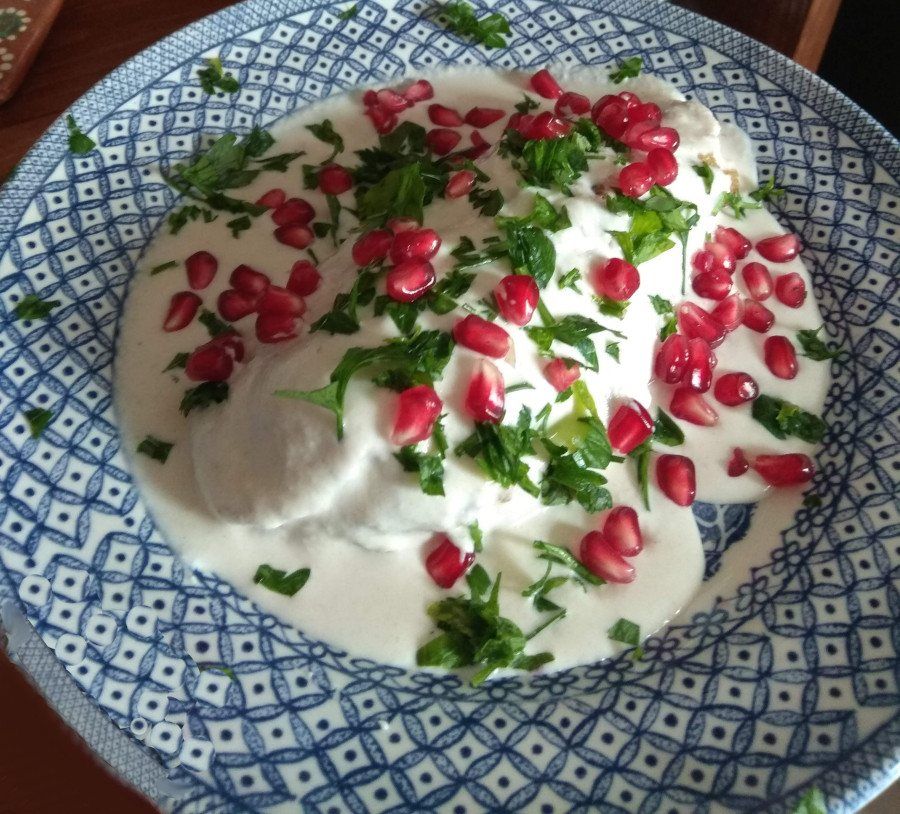How to make Chiles en Nogada without Chile Poblano
Once again we had reached our beloved date of the Independence of Mexico. And of course, you had to celebrate! We already had the tequila and mezcal, the waters, the pozole, the tamales, the tostadas and even the coconut-stuffed lemons for dessert. The table was practically ready and our visiting guests from Mexico had arrived. But unfortunately, something very important was missing to look good. The chiles en nogada! National Holidays without the basic dish, there is no joke. Well no, but looking for poblano peppers in Athens, Greece is in… Greek. How to make chiles en nogada without poblano pepper? I tell you how we prepare them.
The rush made us think and our heads hard, to search. The first thing that occurred to us was to go to our tianguis favorite that gets on Tuesdays in the area. Of course, we were not looking for poblanos but something that could take its place. Without many options, we chose a pepper that made us more suitable to make the dish and we crossed our fingers.
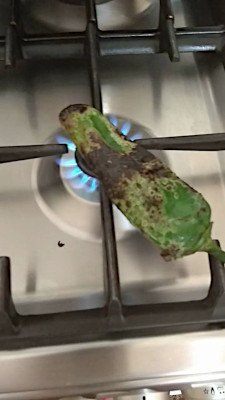
The pepper of our choice is known as "Flórina" because it is from the place of the same name, a region of Greece. The Florina pepper is red when ripe and is red most of the year. We were struck by the fact that at this time, this same pepper is green, because it has not yet ripened. Our reasoning was that it is the color we are looking for, since poblano peppers are of this color. We think that the grains of pomegranate decorating a red chili ... of course not, and anyway, we would need a color to get to have those of the flag! His skin seemed to have the right texture and it only remained to find out if his flavor would be the desired one.
We put a good amount in a bag and walked around the stalls to buy the other ingredients. One by one, we put the pomegranates, walnuts, pine nuts, raisins and the other elements that would give us a succulent dish, like the one we made in Mexico, into our cart. The only bet was our “poblano pepper”.
Once home, we got to work, emptying our shopping cart, first of all. These are the ingredients we use:
Dried and fresh fruits
- 1 cup of chopped apple
- 1 cup of chopped pear
- 1 cup of chopped peach
- 80 gr of pine nuts
- 80 gr of raisins
- 80 gr of peeled and chopped almonds
Note: To replace the acitrón that is in danger of extinctionWe use 70 grams of candied aloe although you can use other candied fruits.
They also need
- 3 tbsp lard
- 1 tbsp sugar
- 3 tbsp tomato concentrate
- 1/2 tsp ground cloves
- 1 pinch of oregano
- 1 pinch of thyme
- 8 ground black peppers
- 1 piece of cinnamon
- Salt to taste
Ingredients
- 20 Florina peppers or similar, deveined and skinless *
- 1 kg of ground pork (also, it can be half pork and half beef)
- 1 onion finely chopped
- 3 garlic cloves finely chopped
* Do not be afraid and enter it! The Flórina pepper has its origins in Brazil and when it was brought to Greece, it found the ideal conditions to grow in the northern region, specifically in the greater area of Flórina. There are other chilies in the world that can substitute for the poblano pepper. For example, the Anaheim chili is a spicier pilín and its flavor is similar.
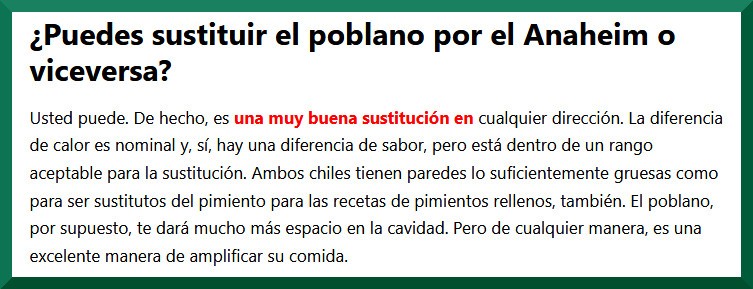
For the nogada
- 100 gr of walnut
- 70 gr of peeled almonds
- 250 gr of goat cheese
- 150 ml milk
- 50 ml sherry
- 2 tsp sugar
How we put them together
Once everything was in place, we began by bringing the butter to the fire already hot, frying the onion and garlic. We continue adding the ground meat and seasoning it, we keep it in the cooking until it loses its liquids and is slightly browned. Right at this moment, we add the tomato concentrate and a tablespoon of sugar to counteract the acidity of the tomato. Here, it is worth mentioning that we made sure that the tomato concentrate did not have water, since we do not want it to release it, creating a mixture that ruins our fruits when placing them.
We stirred and we added our apple, pear and peach, all chopped with their skin so that it would not get off when cooking. We integrate the fruits to the meat for a time of 3 minutes, more or less, until they are slightly cooked. At this point, our noses were about to burst from the whimsical smell that the mixture exuded!
We continue with our nuts, adding one by one, pine nuts, raisins, the finely chopped almond and the candied aloe, stirring for another 5 minutes. At that time we incorporate the spices into our preparation, checking that the salt was adequate and without moving much, we leave it for 5 more minutes. Finally, we remove it from the heat and set it aside.
The mince cooled sufficiently, we begin to fill our well washed chilies and we reserve them.
We fry the chilies without actually browning them, since we only want them to take color. We prefer them weathered and we use 4 fresh eggs at room temperature and flour to roll them, first.
We separate the whites and we mount them until stiff, adding the egg yolks one by one while beating. We add a little salt to our liking.
Helped with a toothpick, we close our chiles well with the mince filling, roll them in flour and shake them carefully to remove the excess. We pass them through our mixture to weather them and we take them to a pot, already with the hot oil. We were very careful that our oil was very hot, since if it was not, our weathered would absorb it, resulting in very greasy chili peppers.
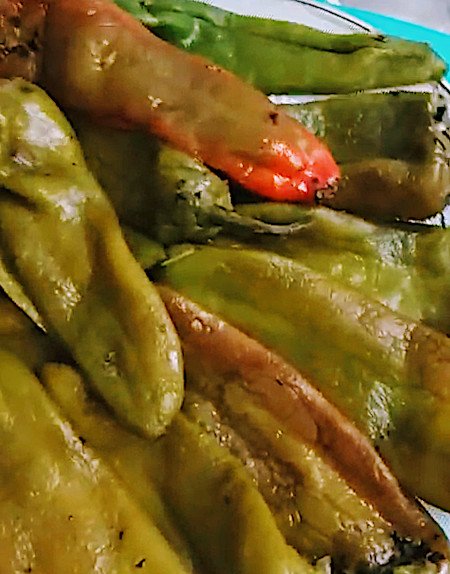
Preparing the nogada
Having our chiles ready, we soak the nuts in milk for a half hour or so, before blending them.
We pour them into a blender along with a little of the milk where we had soaked them, adding the almonds, the cheese, and the sugar and we begin to blend. Little by little we added the sherry and we were on the lookout in case more milk was needed. We take care that our nogada is not too liquid, nor too thick.
Serving them
With everything ready and the guests seated at the table, it was time to serve our dish. The first thing we did was place a bit of the nogada as a base and then lay our stuffed chili on the plate with the opening down. Since we had weathered them, we made sure we removed the toothpick to avoid painful accidents. Once our chili is placed, we bathe it with the nogada and decorate our dish with fresh parsley and pomegranate.
The moment of truth
Everything looked so cute on the table. The chilies, yes they were thinner and more pointed but being covered in nogada, the difference was not so obvious. Our hearts were beating at full throttle awaiting the diners' decision but we remained calm, flashing smiles from ear to ear.
One of the Mexican guests poked the chili with his fork and brought the separated piece to his mouth. By then, it felt like beads of sweat had formed on our foreheads. When we saw her face soften, revealing a look of pleasure, we knew we had found how to make chiles en nogada without poblano peppers.
One after one, all of our guests seemed pleased with the taste of the dish, so we decided that the time had come for the greatest test - ours. Looking into each other's eyes and in an almost synchronized manner, we cut a piece of chili and after having fully flaked it in nogada, we put it in our mouth.
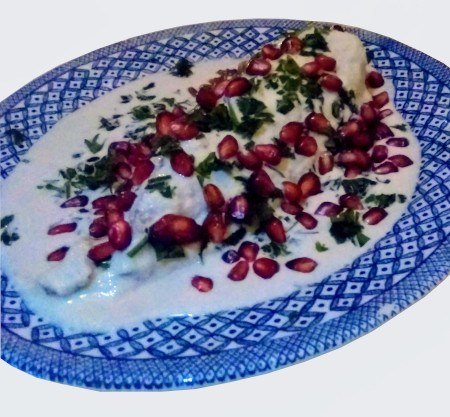
And oh what lust! Personally, I was attracted by memories of Mexican night dinners in Morelia, Michoacán, when I had never thought that I would need poblano peppers. Not to mention my husband. He was almost frozen, eyes closed and with his characteristic smile of pleasure on his face. Sure, it lacked this slight heat that poblano peppers sometimes have, but their texture was practically the same. In conjunction with the other ingredients, the bite asked almost nothing of the original and I can safely say that the dish was the reason for a successful evening.
This then, was our experience replicating such a Mexican dish without having the essential ingredient - the poblano pepper. And you, have you tried to substitute one chili for another? How did it go? Share your tests with us in the comments below. We would love to hear about your experiments!

